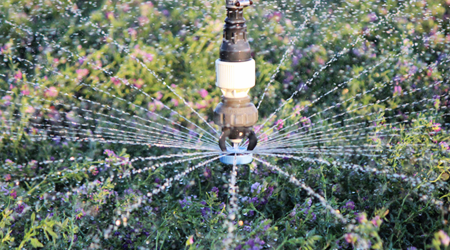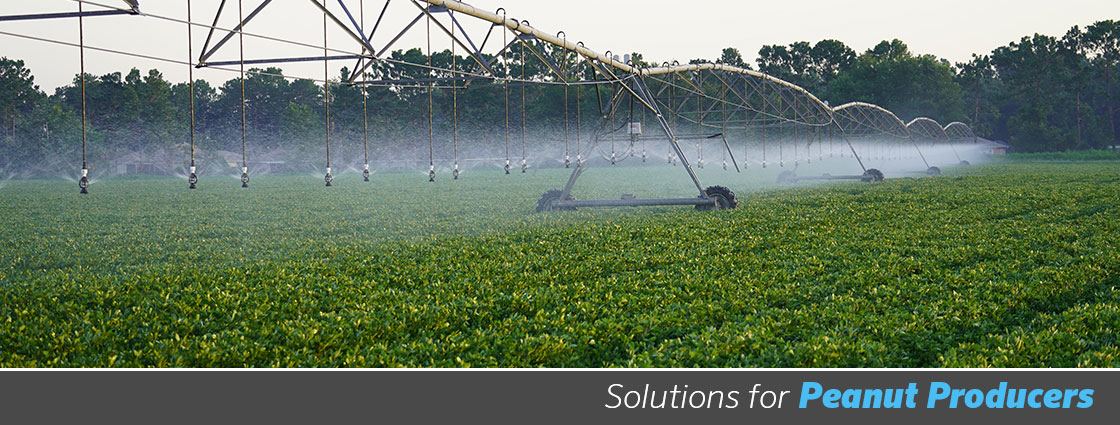
Peanut irrigation requirements depend on the crop's growth stage and external factors, including region and climate conditions.
According to research conducted in the Southeast of the United States, a peanut crop typically needs 18 inches of water (from irrigation plus rainfall) to provide satisfactory yields. The total amount of water input may need to be higher since rainfall or irrigation may not be 100% efficient, and water losses may occur due to runoff, deep percolation, or environmental conditions.
Growers must consider four critical periods based on how much water peanuts need to develop satisfactorily — planting to emergence; emergence to pegging/flowering; flowering/pegging and pod formation; pod formation to maturity.
Peanut irrigation requirements enter the most critical period from week 8 to 15 during flowering, pegging, and pod formation when the crop's water use is highest.

How do peanuts grow?
Farmers in the USA Peanut Belt plant peanuts after the last frost in April through May when the soil reaches 65° to 70°F. They sow specially cultivated peanut kernels from the previous year's crop at a depth of about two inches in rows one to two inches apart. Tillage before planting guarantees a rich, well-prepared seedbed. Between 140 to 150 frost-free days are necessary for a decent harvest.
After planting and before harvesting, the peanut life cycle includes several phases:
Plants emerge from the soil
After being planted, peanut seeds sprout about ten days later. They develop into a green, 18-inch-tall plant with oval leaves. In contrast to most plants, the peanut plant produces its fruits underground yet blossoms above ground.
Blossoms appear
About 40 days after planting, yellow blooms appear around the plant's lower part. The flowers self-pollinate, and the petals come off as the peanut ovary develops.
Pegging
The developing ovary, known as a peg, grows down and away from the plant. It enlarges and develops into a tiny stem that reaches the soil. The peg pierces the ground with the peanut embryo in its point. The embryo tilts horizontally toward the soil's surface and becomes a peanut. The plant keeps expanding and blooming, eventually setting 40 or more pods.
Harvest
The plant reaches maturity, and the peanuts are ready for harvest 140 to 150 days after planting. The farmers wait until the soil is not too wet or dry before digging.
Peanut Irrigation Requirements and Water Management Considerations
Understanding each growth stage and applying appropriate amounts of water throughout each phase will help your peanuts grow healthy.
Effective irrigation management allows water application at specified periods to meet crop needs while minimizing water loss due to wind drift, evaporation, runoff, or deep percolation.
The process of irrigation scheduling involves determining how much water is required and when to apply it to the field.
UGA Extension created an irrigation scheduling guide that can assist you in planning an irrigation schedule for peanuts and other major row crops cultivated in Georgia. The guide includes the following curve illustrating the peanut plant's weekly water requirement (irrigation plus rainfall).
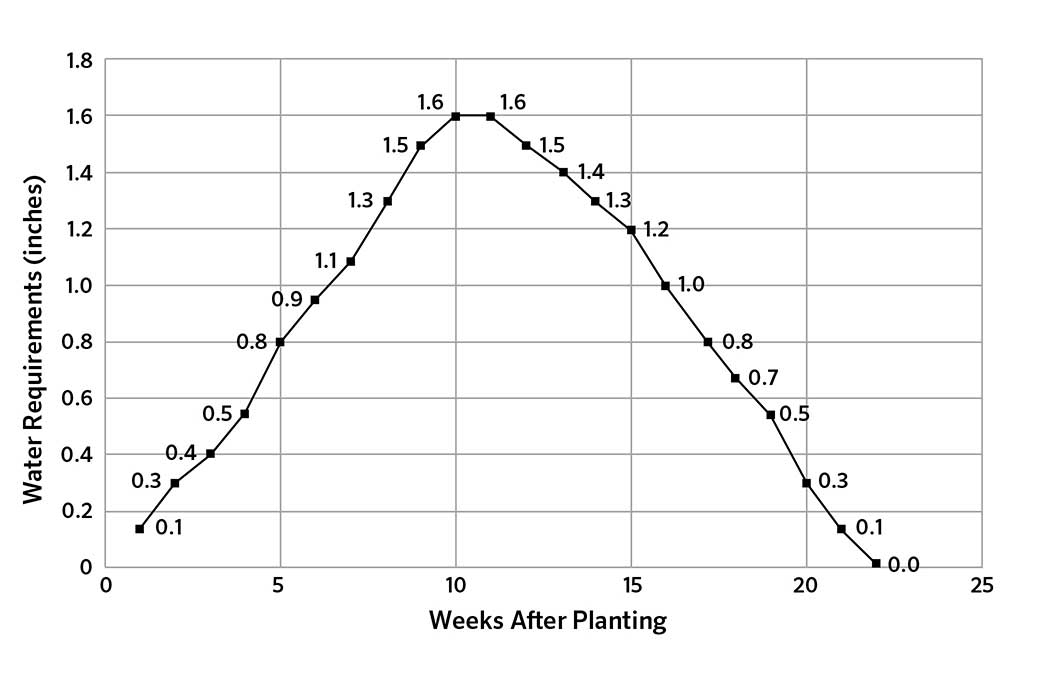
Wes Porter, UGA Extension Irrigation Specialist, points out the use of irrigation scheduling tools like the checkbook method, computer models, and soil moisture sensors to ensure irrigation timing and amounts accuracy.
Likewise, Porter recommends considering the efficiency of the irrigation system. “Efficiency usually ranges from 60 to 95 percent. When talking about efficiency, if your system is only at 60 percent efficiency, keep in mind that means only six-tenths of an inch is getting down to the crop.
“Those in the 60 percent range are usually older systems, solid-set systems, travel guns, and systems that perform at high pressures. Newer, low-pressure systems can be around 90 to 95 percent efficiency,” Porter says.
Irrigation Solutions for Peanut Growers
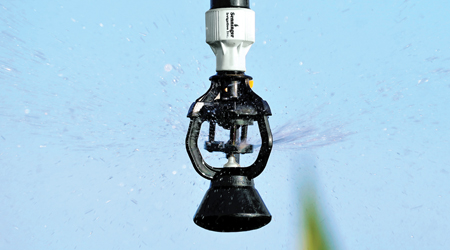
i-Wob®2
Senninger low-pressure sprinklers like the i-Wob2 are designed to maximize water distribution uniformity. I-Wob2 features four different models that produce multiple droplet sizes and trajectories, making it suitable for virtually any field or situation, including windy conditions, difficult soils, and more.
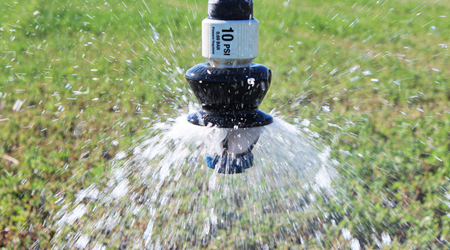
LDN® LEPA
Researchers from Texas A&M AgriLife found that application efficiencies in LEPA systems were greater than 90 percent. For growers with salinity issues, we recommend LEPA bubblers that avoid wetting plant canopy in row crops to reduce foliar salt damage. Among their multiple benefits, including water and energy savings, LEPA bubblers’ water distribution has been shown to help leach salts beneath the root zone in row crops.
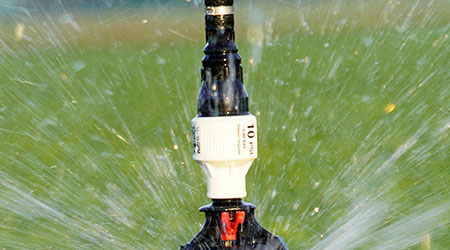
Pressure Regulators
Senninger® black and white pressure regulators are renowned for their accuracy, durability, and ability to maintain the overall efficiency of an irrigation system. Consider using pressure regulators on a center pivot or linear irrigation system if your peanuts grow on sloping fields to help ensure proper distribution uniformity.

